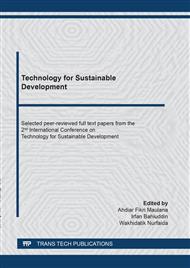p.17
p.23
p.33
p.43
p.49
p.59
p.65
p.75
p.83
Rock Mass Classifications of Flysch Deposits for Analyses of Tunnel Behaviour and Support System-A Case Study of Design Evaluation of Tunnel 6 of Jakarta-Bandung High-Speed Railway
Abstract:
Tunnel 6 of the Jakarta-Bandung high-speed railway is the longest mountain tunnel in Indonesia. This study aimed to evaluate the behaviour of rock masses surrounding the tunnel and support system by conducting surface and subsurface engineering geological investigations. The rock masses at the tunnel construction area were classified based on the Rock Quality Designation (RQD), Rock Mass Rating (RMR), Tunnelling Quality Index (Q), and Geological Strength Index (GSI) systems. The surface and subsurface investigation results show that the tunnel construction area consists of Quaternary volcanic rocks overlying Tertiary sedimentary rocks of the Jatiluhur Formation. The sedimentary rocks have characteristics similar to flysch deposits and are classified as poor to good quality rock masses. The regional tectonic setting had likely worsened the rock mass conditions. Down to a 10 m depth, the rock mass quality is controlled by the RQD value, which correlates with the grain size distribution of the rock masses. The rock masses surrounding the tunnel are anticipated to have an anisotropic behaviour and wedge and chimney failure mechanisms. Consequently, a combination of reinforced shotcrete and bolting is recommended for a conservative empirical design of the tunnel support system.
Info:
Periodical:
Pages:
49-58
Citation:
Online since:
April 2022
Authors:
Price:
Сopyright:
© 2022 Trans Tech Publications Ltd. All Rights Reserved
Share:
Citation:


